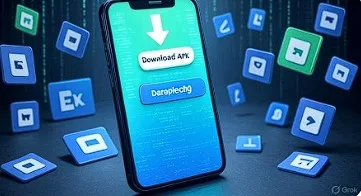
Westside Chennai: The Store That Has Everything
July 19, 2025
Contoh Surat Lamaran Kerja: The Guide You Wish You Had
July 20, 2025Welcome to the Magical World of Kata Benda
Updated: July 2025
Kata benda! What is it? Get ready to dive into one of the most important, versatile, and surprisingly fun parts of language: the kata benda. These are the original building blocks of grammar, the words we rely on every single day to name everything around us. In both Bahasa Indonesia and English, nouns (or kata benda) are the foundation for expressing who we are, what we do, where we go, and how we feel.
Whether you’re a student preparing for an upcoming grammar quiz, a teacher designing a lesson plan, a language enthusiast brushing up on your skills, or just someone who’s ever stopped to wonder, “Wait… is kucing a kata benda?” (spoiler alert: yes, your cat counts as one), you’re exactly where you need to be.
This blog is not your typical dry grammar lesson. You won’t find boring textbook definitions or memorization drills here. Instead, we’re taking a fun and creative journey through the world of nouns with simple explanations, useful examples, and a friendly tone that makes learning feel more like a conversation than a classroom. We’ll explore the different types of kata benda, how they function in real sentences, and how to identify them in both Indonesian and English.
So buckle up and get comfortable. Whether you’re brand new to the topic or just looking to understand it more clearly, this guide is designed to make the world of kata benda feel easy, approachable, and maybe even a little bit magical.
What is Kata Benda? (a.k.a. Nouns in Real Life)
Let’s kick things off with a simple question: what exactly is a kata benda? The term “kata benda” is Indonesian, and it directly translates to “noun” in English. A noun is one of the most fundamental parts of speech in any language. It’s the name we give to people, places, things, animals, feelings, or even abstract concepts basically, anything that exists or can be imagined.
Think about it this way: every time you talk about something or someone like your mom, your phone, your school, or even your dreams — you’re using a noun. That’s how common and essential they are. Without nouns, you wouldn’t be able to tell someone where you’re going, what you like, who you met, or how you feel. You’d be left with just a bunch of actions and no characters, places, or things involved in those actions.
For example, in English, words like teacher, friend, or father are nouns because they refer to people. School, market, and beach are also nouns, but this time they refer to places. Then you have physical objects like chair, laptop, and book, which are clearly things you can touch these are also nouns. But nouns aren’t always tangible. There are also abstract nouns like happiness, love, and anger you can’t see or touch these, but they’re powerful ideas or emotions that exist in our minds.
So, how can you tell if a word is a noun or kata benda? Here’s the golden rule: if you can name it, think about it, point to it, or even feel it emotionally, chances are it’s a noun. Nouns are everywhere. They’re the stars of your sentences — the ones doing the action, receiving the action, or simply being described. They’re the core reason a sentence makes any sense at all.
In short, kata benda is the grammar world’s way of giving a name to… well, everything.
Kata Benda in English vs. Indonesian: How Different Are They?
Now let’s talk about something interesting: how kata benda work in English compared to Indonesian. This is where many learners start noticing the beauty of language patterns. At their core, nouns behave quite similarly in both languages. A noun in English and a kata benda in Indonesian both serve the same purpose — they name people, places, things, and ideas. But while the concept stays the same, the actual words and structures can look very different.
Take a look at some quick comparisons. The word “rumah” in Indonesian means “house” in English. “Cinta” becomes “love,” “kucing” is “cat,” “buku” translates to “book,” and “harapan” means “hope.” Even though these words sound and look different, they function the same way in a sentence. This is a great reminder that grammar rules may shift between languages, but the fundamental building blocks like nouns are universal.
This is why so many people search for “kata benda bahasa Inggris” they’re trying to find clear, practical examples of how nouns appear in everyday English. So, if you’ve ever found yourself Googling that phrase, don’t worry. You’re not alone, and you’re definitely in the right place.
To help out, here’s a super handy list of fifty everyday nouns in English that you’re likely to use or come across frequently. These words range from objects you can see and touch, to ideas you can feel but not hold. Some are concrete, some abstract, but all of them are 100% kata benda.
Think of this as your starter pack of English nouns: pen, car, dog, happiness, time, rain, child, song, food, garden, doctor, phone, city, game, plan, hair, glass, music, coffee, camera, table, chair, family, teacher, river, movie, idea, country, fish, phone, bed, homework, store, light, wind, snow, plant, mirror, train, plane, party, noise, perfume, message, letter, truth, dream, silence, banana, and yes, even ice cream.
These words might seem simple, but they’re the core ingredients of most conversations. Whether you’re writing a sentence, having a chat, or reading a book, chances are you’re using dozens of kata benda bahasa Inggris without even realizing it.
Types of Kata Benda
(You Probably Know More Than You Think)
Now that we’ve covered what kata benda are, let’s take it a step further and explore the different types. Just like in English, not all nouns are created equal. There are various categories, and understanding each one will help you identify and use them more effectively in both Indonesian and English. Don’t worry we’ll keep things simple, clear, and even a little fun.
The first category is common nouns, or in Indonesian, kata benda umum. These refer to general things, people, or places. They’re not specific; instead, they represent a broad category. For example, words like bike, person, city, or animal fall under this type. You’re not talking about a specific bike or a certain city, just bikes or cities in general.
Next, we have proper nouns, or kata benda khusus. These are the opposite of common nouns because they name a specific person, place, or thing. Think of names like Jakarta, Google, Ronaldo, or Siti. They always begin with a capital letter in English, and they point to something unique rather than a general category.
Then, there are concrete nouns, known as kata benda konkret. These are things you can physically experience through your senses you can see them, touch them, smell them, maybe even trip over them if you’re not paying attention. Examples include a table, water, bread, or phone. If it exists in the physical world, it’s concrete.
On the flip side, we have abstract nouns, or kata benda abstrak. These are things you can’t physically touch, but you can definitely feel or think about them. Words like love, hope, fear, and motivation are all abstract nouns. They represent emotions, states of mind, or concepts that are very real, even if you can’t point to them.
Lastly, let’s look at singular and plural nouns, which are referred to as kata benda tunggal and kata benda jamak. A singular noun refers to just one thing, like apple. A plural noun refers to more than one, like apples. In English, most plural nouns are formed by simply adding an “s” to the end. In Indonesian, plurals can be made by repeating the word so apel-apel means apples. You can also use quantity words to indicate more than one, like saying dua apel (two apples).
Understanding these categories helps you organize your thoughts and speak or write with more clarity. The best part? You’ve probably been using all of these types of kata benda without even realizing it. That’s how naturally they show up in language.
How Kata Benda Bring Sentences to Life
Let’s be honest without kata benda, a sentence feels empty. Nouns are the heart of a sentence because they give us something to talk about. Without them, you’d be left with floating verbs and disconnected actions. Imagine saying “eats” without mentioning who is eating or what’s being eaten. Confusing, right? That’s where kata benda come in to save the day.
Take a look at how they work in real sentences. In Indonesian, when you say “Saya membeli buku baru,” you’re saying “I bought a new book.” The word buku (book) is the noun here. In another example, “Ibu memasak nasi goreng,” the nouns are Ibu (mother) and nasi goreng (fried rice). These nouns tell us who is doing the action and what’s involved in it. Similarly, in the sentence “Mereka pergi ke sekolah setiap hari,” the word sekolah (school) is the destination — and yes, that’s a noun too.
In English, the same rules apply. When you say “I love reading books,” the noun is books. It gives meaning to the verb reading. In “She is my best friend,” friend is the noun that defines the relationship. And in “We walked to the beach,” the word beach is a place, which makes it a noun as well.
If you want a fun way to test your understanding, try swapping the nouns in each sentence with something else. Replace book with magazine, beach with mountain, or friend with teacher. You’ll see how just one noun change can completely shift the meaning of a sentence. That’s the power of kata benda small words with a big impact.
Kata Benda vs Kata Kerja vs Kata Sifat: Meet the Grammar Trio
Now that you’ve gotten to know kata benda pretty well, it’s time to meet their closest companions in the world of grammar: kata kerja and kata sifat. These three word types work together in almost every sentence you read, hear, or say like a powerful team making language function smoothly.
Let’s break them down. First, kata benda, or nouns, are the words that name people, places, things, animals, or ideas. They’re the ones doing something or being described. Words like flower, motorcycle, or happiness all fall into this category. They give sentences their subject or object the who and the what.
Next up, we have kata kerja, which are verbs. These are the action words. If someone is running, eating, reading, jumping, or sleeping, you’re using a verb. Verbs show what the noun is doing. Without them, sentences would just be a list of things sitting still.
Then, there’s kata sifat, or adjectives. These words describe or give more detail about a noun. They tell you if something is beautiful, big, fast, old, or happy. Adjectives add color to your sentence and help the listener or reader imagine things more clearly.
Let’s look at a quick real-life example:
In the sentence “Anak itu berlari sangat cepat,” you’ll find all three parts at work.
Anak (child) is the kata benda — it’s who we’re talking about.
Berlari (running) is the kata kerja — it shows the action happening.
Cepat (fast) is the kata sifat — it tells us how the child is running.
All three play their part to form a complete idea. On their own, they each do something useful. But when you bring them together, they become a sentence-building dream team – kind of like the Avengers of grammar, each with a special skill that makes communication powerful.
Kata Benda Quiz Time: Test Your Noun Skills!
Let’s take a short break from reading and put your kata benda knowledge to the test with a few fun practice questions. Don’t worry this won’t feel like a real exam. Think of it more like a quick brain workout to make sure everything we’ve talked about so far has really stuck.
Question 1: Which of the following is a noun?
You’re given three choices: lari (which means “to run”), sepatu (which means “shoes”), and cantik (which means “beautiful”).
If you picked sepatu, you’re absolutely right. “Lari” is a verb because it shows an action, and “cantik” is an adjective because it describes something. But “sepatu” is a physical object something you can touch, wear, and trip over. That makes it a classic kata benda.
Question 2: Which one is an abstract noun?
This time the choices are: meja (table), cinta (love), and kucing (cat).
The correct answer is cinta. Why? Because even though you can feel love deeply, you can’t actually see it or hold it in your hand. That makes it an abstract noun. Meja and kucing are both concrete nouns you can touch them and even sit at one while petting the other.
Question 3: Let’s identify the nouns in this English sentence: “The teacher reads a book.”
Take a moment to look closely. Who is doing something in this sentence? And what are they interacting with?
The words teacher and book are both nouns here. “Teacher” is the person performing the action, and “book” is the object being read. They are the essential building blocks that give this sentence meaning.
If you nailed all three questions, you’re officially a kata benda pro. If you missed one, don’t worry — learning a language is all about practice, and you’re already doing great just by showing up and trying.
Using Kata Benda the Right Way (It’s Easier Than You Think)
Grammar can sometimes feel overwhelming, especially when you’re learning a new language. But here’s the good news: kata benda are actually some of the easiest parts of a sentence to use once you recognize the patterns. You don’t need to memorize dozens of complex rules you just need to understand where nouns usually show up and how they function in everyday sentences.
Most of the time, nouns appear in three key places: as the subject, the object, or the complement of a sentence. Think of the subject as the one doing something in the sentence. For example, in the sentence “Anak itu pintar” (“That child is smart”), anak (child) is the subject. It’s the noun that the sentence revolves around.
Then there’s the object, which is the thing receiving the action. Take the sentence “Saya membaca buku” (“I read a book”). Here, buku (book) is the object because it’s what’s being read. The noun follows the verb and helps complete the meaning of the sentence.
Finally, nouns can also act as a complement, which is a fancy word for something that comes after a linking verb like “is” or “are” and gives more information about the subject. For instance, in the sentence “Dia adalah dokter” (“She is a doctor”), dokter (doctor) is a noun that describes who she is. It’s not doing anything, but it still plays an important role in completing the thought.
So whenever you’re trying to figure out where a noun belongs, just ask yourself: am I naming something, someone, or some idea? If the answer is yes, then a kata benda is probably the right fit. It’s all about recognizing those familiar sentence patterns and filling in the blanks with the right nouns. Simple, right?
FAQ: Quick Answers for Curious Minds About Kata Benda
Q: What exactly is a kata benda?
A: A kata benda is the Indonesian term for a noun. It’s a word used to name a person, place, object, idea, or feeling. Whether you’re talking about a friend, a city, a table, or even something like happiness, you’re using a noun.
Q: Can you give examples of kata benda in English?
A: Absolutely! Some common English nouns include book, car, dog, love, city, and idea. These are all names of things, places, animals, or concepts, which makes them clear examples of kata benda.
Q: What’s the difference between a kata benda and a kata kerja?
A: A kata benda names something, while a kata kerja describes an action. For example, in the sentence “She writes a letter,” she and letter are nouns, but writes is the verb because it tells us what action is happening.
Q: How can I identify a kata benda in a sentence?
A: A good trick is to look for the subject or object of the sentence. These parts of a sentence are usually filled by nouns. If the word is naming someone, somewhere, or something, it’s very likely a kata benda.
Q: What are the different types of kata benda I should know?
A: There are several types, and each one has its own role. The main ones include common nouns (general things), proper nouns (specific names), concrete nouns (things you can touch), abstract nouns (things you can feel but not touch), singular nouns (one item), and plural nouns (more than one item). Knowing these categories can really help you get more confident with grammar.





1 Comment
[…] days, anyone — from freelancers and HR professionals to students and business owners – can sign a document from their phone while sipping coffee in pajamas. And the best part? It’s legal, fast, and honestly kind of […]